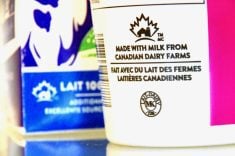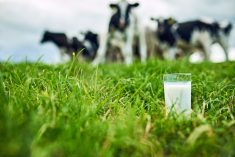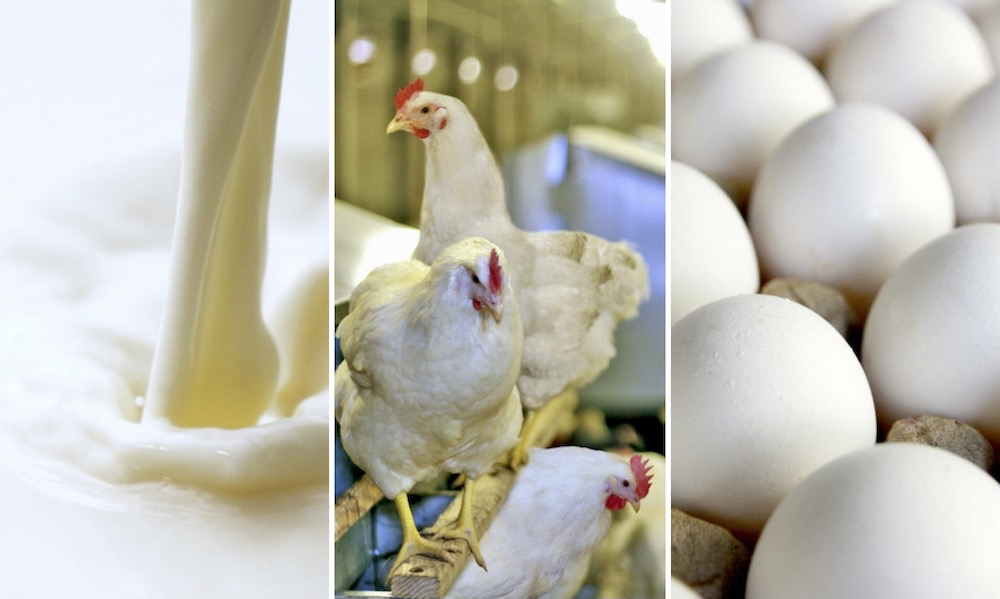Canadian dairy farmers will give up more than 3.25 per cent of their domestic market if Canada ratifies the Trans-Pacific Partnership (TPP) trade deal, according to Al Mussell, an agricultural economist and research lead with Agri-Food Economic Systems in Guelph, Ont.
But how much more isn’t clear since the text of the agreement hasn’t been released.
Communiqués from the United States, Australia, and New Zealand reveal that Canada agreed to eliminate tariffs on milk protein isolates immediately upon TPP coming into force and tariffs on dried whey will be phased out, Mussell said in an interview Oct. 15.
Read Also

Mazergroup’s Bob Mazer dies
Mazergroup’s Bob Mazer, who helped grow his family’s company into a string of farm equipment dealerships and the main dealer for New Holland machinery in Saskatchewan and Manitoba, died July 6 from cancer.
The dairy sector had expected Canada might have to relinquish five or even 10 per cent of its market under the TPP deal reached Oct. 5 between Canada, Australia, Brunei, Chile, Japan, Malaysia, Mexico, New Zealand, Peru, Singapore, the U.S. and Vietnam.
When the Canadian government announced 3.25 per cent access, along with $4.3 billion in subsidies to offset lost income for dairy and other supply management producers, plus additional access for Canadian dairy products in the U.S., “it seemed too good to be true,” Mussell said.
“In some ways it is too good to be true because between CETA (Canada-Europe Trade Agreement) and Trans-Pacific, we are going to be wide open on (imports) of milk protein isolates immediately when it comes into force, and we’re going to have phased-in access on dried whey.”
Milk protein isolates and dried whey are used to make a wide range of dairy products such as cheese, yogurt and ice cream. They can also replace skim milk powder, also used to make dairy products. Canada already has too much skim milk. A small amount has even been destroyed, Mussell said. Moreover, imported milk protein isolates and dried whey will be cheaper.
“We’ve set ourselves up here to have potentially large volumes of basically skim milk-dense products coming in and that will make our situation just that much worse,” he said. “It’s going to be a pretty desperate situation.”
Surplus skim milk has been an issue in Canada for years, but it got a lot worse when the U.S. began shipping more milk protein isolates north a few years ago. Milk protein isolates are classed as a protein, not a dairy product in Canada’s tariff schedule, and under the North American Free Trade Agreement new tariffs are prohibited. As a result U.S. milk protein isolate exports to Canada have risen exponentially, Mussell said.
Meanwhile, in the early 2000s the World Trade Organization capped how much skim milk Canada could export, ruling supply management’s protection from imports is equivalent to a subsidy.
“So here we are in this exceptionally awkward situation in which we had some skim surplus to begin with, but then we were restrained on exports and now we’ve got unrestrained imports coming in,” he said. “You don’t have to be a rocket scientist to figure out that this is a very serious problem for us.”
In fact, Canadian dairy farmers and processors had already been discussing how to get their skim milk prices down to match lower world prices before the TPP agreement was reached, Mussel said.
Last week Ontario’s milk board said it would move unilaterally if necessary to find a way to make its skim milk competitive.
“It gives you some sense of the urgency,” he said.
“There’s no doubt in my mind that if we can find a way to price competitively (and) if we can get export market access, there is no reason why we could not retain supply management and in so doing we would avoid many of the challenges we are seeing elsewhere in the world,” Mussell said.
The European Union is spending 500 million euros to bail out its struggling dairy sector, meanwhile some EU dairy farmers are “ramping up production,” he said.
That should make people think about how different countries support their dairy sectors, he added.
The U.S. subsidizes its dairy farmers, including buying cows in the past in an effort to rein in milk production that exceeded demand.
The Dairy Farmers of Canada declined to comment on Mussell’s analysis when contacted last week.
“At this time, we are currently reviewing the information that is available to us,” DFC spokesperson Sandra Da Silva said in an email. “We are still waiting for further details on the (TPP) agreement. Before commenting further on the dairy access, we want to ensure we have had the time to review all the information.”
Even though Canadian dairy farmers face more foreign competition, “(t)here is nothing in the Trans-Pacific Partnership that would cause the elimination of supply management,” Mussel said. “What would cause that frankly would be some combination of the farmers and provincial governments not wanting to do this anymore and there’s no indication of that whatsoever.”
More on Mussell’s analysis can be found online at agrifoodecon.ca.





















